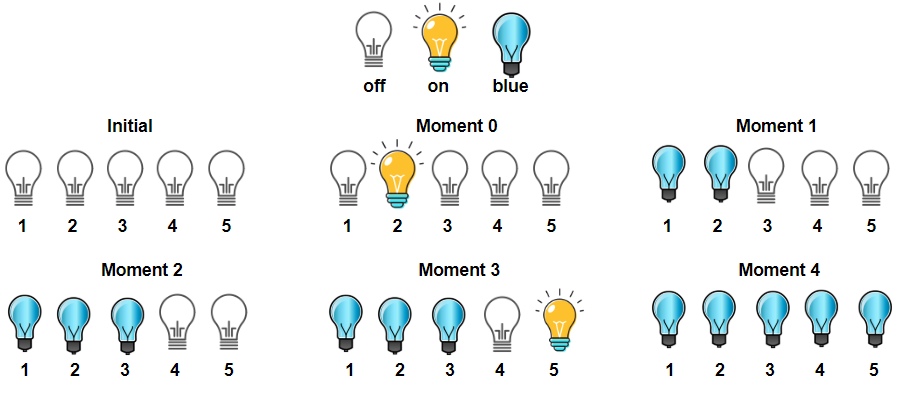Given a string s of zeros and ones, return the maximum score after splitting the string into two non-empty substrings (i.e. left substring and right substring).
The score after splitting a string is the number of zeros in the left substring plus the number of ones in the right substring.
Example 1:
Input: s = "011101" Output: 5 Explanation: All possible ways of splitting s into two non-empty substrings are: left = "0" and right = "11101", score = 1 + 4 = 5 left = "01" and right = "1101", score = 1 + 3 = 4 left = "011" and right = "101", score = 1 + 2 = 3 left = "0111" and right = "01", score = 1 + 1 = 2 left = "01110" and right = "1", score = 2 + 1 = 3
Example 2:
Input: s = "00111" Output: 5 Explanation: When left = "00" and right = "111", we get the maximum score = 2 + 3 = 5
Example 3:
Input: s = "1111" Output: 3
Constraints:
2 <= s.length <= 500- The string
sconsists of characters ‘0’ and ‘1’ only.
Solution 1: Brute Force
Time complexity: O(n^2)
Space complexity: O(1)
Solution 2: Counting
2.1 Two passes,
1st, count the number of ones of the entire string
2nd, inc zeros or dec ones according to s[i]
ans = max(zeros + ones)
Time complexity: O(n)
Space complexity: O(1)
C++
|
1 2 3 4 5 6 7 8 9 10 11 12 13 14 15 16 17 |
// Author: Huahua class Solution { public: int maxScore(string s) { int ones = 0; for (char c : s) if (c == '1') ++ones; int zeros = 0; int ans = 0; for (int i = 0; i < s.length() - 1; ++i) { if (s[i] == '0') ++zeros; else --ones; ans = max(ans, zeros + ones); } return ans; } }; |
